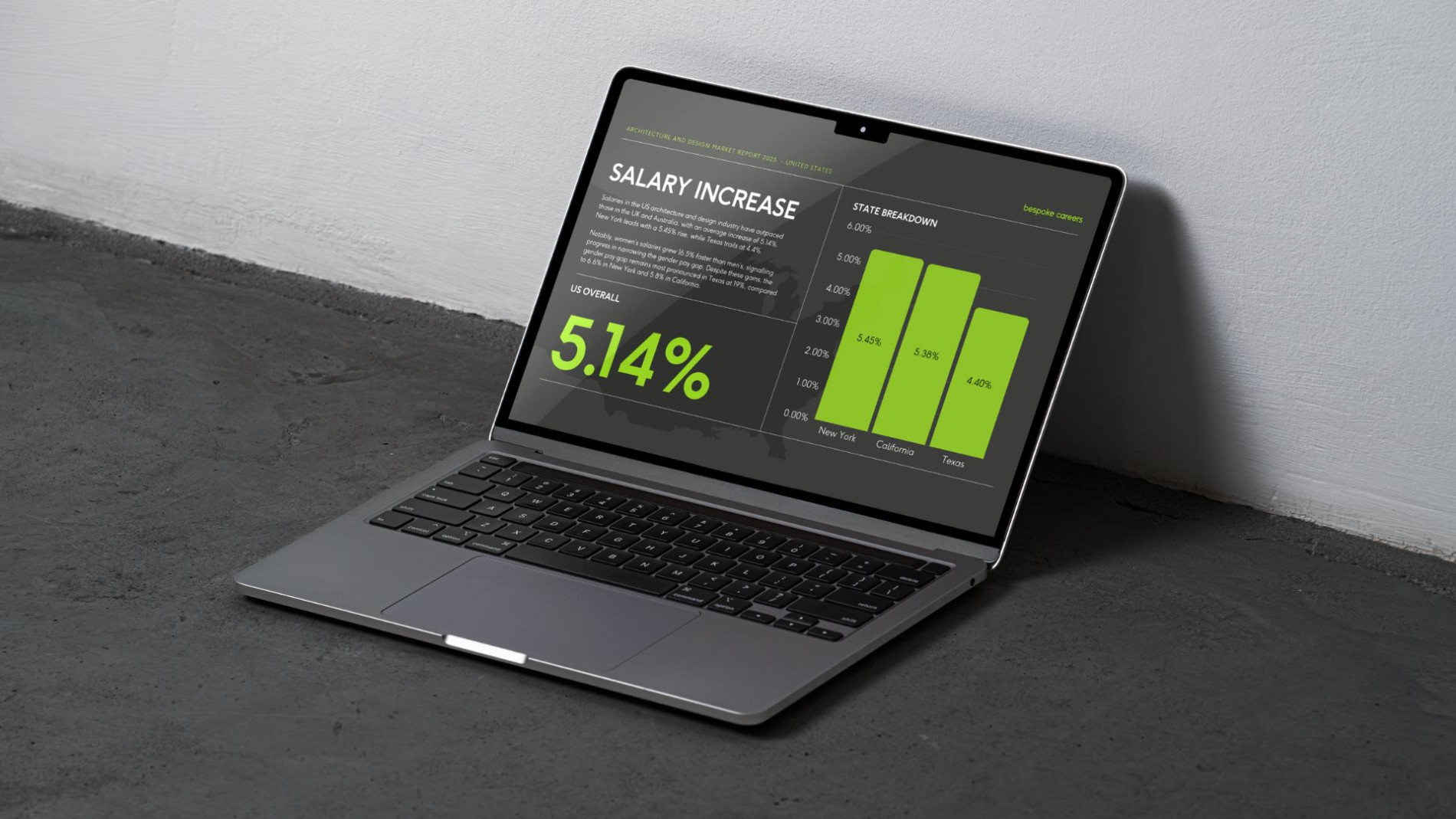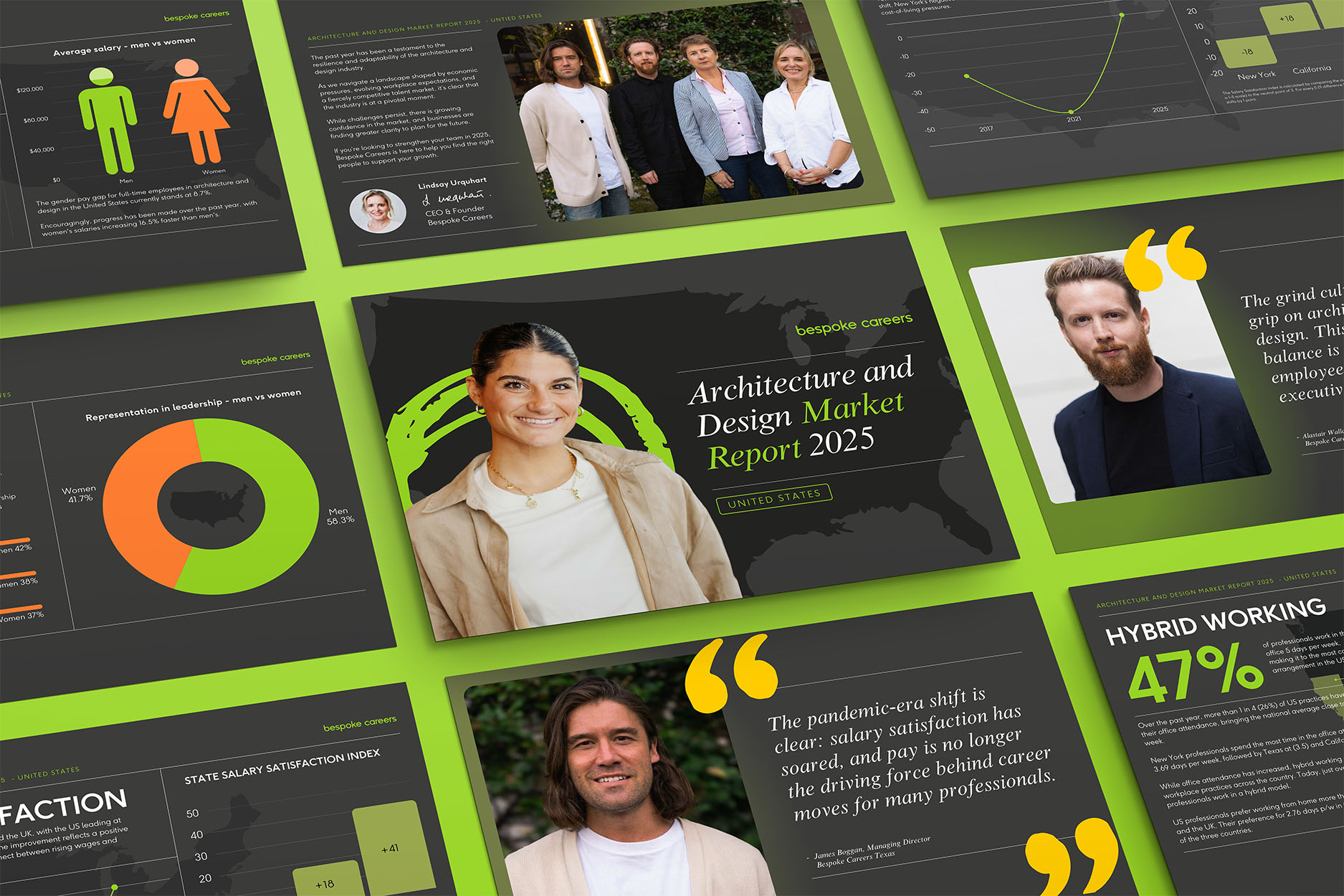The US Architecture and Design Market Report 2025
The past year has been a testament to the resilience and adaptability of the architecture and design industry.
While challenges persist, there is growing confidence in the market. Unpredictable? Yes. Cause for optimism? Definitely.
Download the report for a full picture into the state of the architecture industry today.
Download the report 👇

What's inside
 ?
?
Based on a global survey of over 1,000 architecture and design professionals, drawing from 46,000+ data points.
Satisfaction levels in the US are improving, with Texas leading and New York trailing. While more professionals feel positive about their work, the gap between regions suggests local factors still weigh heavily.
Average salaries rose by just over 5%, with New York seeing the highest increase. Despite the gains, salary satisfaction is mixed, with rising pay not always keeping up with cost-of-living pressures.
Office attendance is on the rise. One in four firms increased in-office days last year, but most professionals still prefer a hybrid setup.
Work-life balance is now the top reason people move jobs. Pay remains important (particularly for men) but priorities are shifting towards flexibility, culture and career growth.
Wellbeing varies widely. Texas scores well on feeling valued and mental health support, while New York lags behind. However there is broadly positive sentiment everywhere.
Women’s salaries grew faster than men’s, but the gap hasn’t closed. Texas shows the widest disparity, and women remain underrepresented in leadership roles across all regions.




